- LAGRANGIAN
- Posts
- Issue 59 | Breaking Space News: July 13 - 19, 2025
Issue 59 | Breaking Space News: July 13 - 19, 2025
Earth-Size Worlds May Be Less Common Than Expected — This Week in Space: INVICTUS Spaceplane, Record Breaking Cargo Shipment to the Chinese Space Station, Oxygen & Water From Lunar Soil, Black Hole Merger, & TRACERS Mission. Plus: Trump Admin Makes Climate Report Unavailable, Science Budget Debate in the US, NASA Protest, Space Force Updates, AX-4 Return, Satellite Services & UK's GDP, SES-Intelsat Merger.
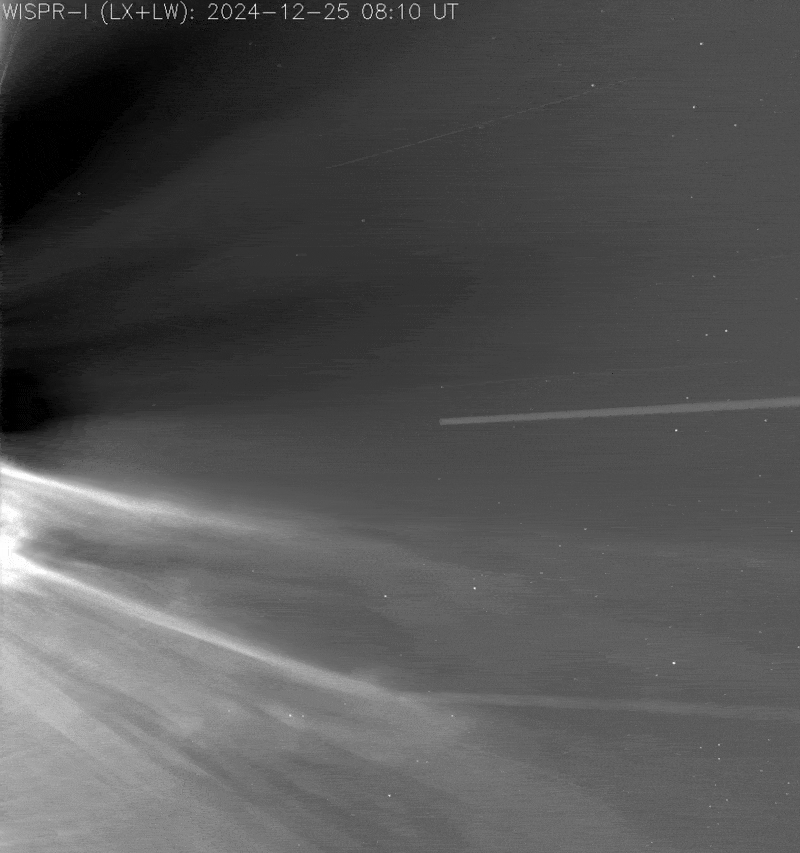
Explorer, welcome back!🚀
These last few months, it has become increasingly challenging to categorize space-related news into neat classifications such as governance, military or commercial. What had once seemed like distinct domains, now operate through overlapping logics of capital, strategy, and control.
Rory Rowan explains it best in his essay: many liberal accounts treat ‘state’ and ‘commercial’ space actors as oppositional forces, missing the deeper entanglement of capital and governance. Frameworks grounded in Marxist political economy and imperial analysis offer better tools for interpreting the current conjuncture, where economic growth and geopolitical intensity are co-produced. Just some for thought.
As always, today’s publication is best read here ⬇️
Hope you enjoy this Space!
Gravitational Waves Reveal Record-Breaking Black Hole Merger
ESA-Funded, UK-Led Consortium to Develop Reusable Hypersonic Spaceplace, INVICTUS
New Strategy Urges US to Accelerate Space Nuclear Power Development
Chang’e 6 Samples Reveal Volcanic and Magnetic History of Moon’s Far Side
Chinese Researchers Demonstrate Sunlight-Powered Extraction of Water and Oxygen From Lunar Soil
NASA’s TRACERS Satellites to Study Magnetic Reconnection in Earth’s Magnetosphere
US Lawmakers Urge Space Force to Expand Commercial Surveillance Programs
Space Force Releases Guidelines for Commercial Space Access Resourcing
Space Force Accepts Long-Delayed GPS OCX System for Final Testing
Solestial Secures SpaceWERX Contract to Develop Fast-Assembly Solar Array Wing
York Space Systems to Acquire ATLAS in Move to Strengthen Space-to-Ground Capabilities
U.S. Defense Budget Highlights Operational Investments and Policy Riders
China Fast-Tracks Its Entry into Global LEO Connectivity Landscape
Axiom's Ax-4 Crew from India, Poland, & Hungary Complete ISS Visit
Polish Firm SatRev Delivers Modular Satellite Ground Station to Oman
Satellite Services Now Support 18% of UK GDP, New Data Shows
SES Completes Intelsat Acquisition to Form Global Multi-Orbit Operator

PRIMER
A lot of the news we cover has to do with different types of orbits, such as low Earth orbit, Geostationary Orbit (GEO), and more. Beyond these basic altitude-based categories, there are many other types of orbits. They can be classified by shape, altitude, inclination, purpose, or unique characteristics. Over the next few weeks, we’ll explore different kinds to help readers better understand the news we report:
Low Earth Orbit (LEO)
Altitude: 160 to 2,000 km or approx.100 to 1,240 miles above the surface of the Earth.
Orbital Period: ~90 minutes (15–16 orbits per day).
Key Characteristics:
Closest orbital band to Earth, allowing rapid revisit times, high-resolution imaging and low-latency communication.
Experiences atmospheric drag, leading to gradual orbital decay; satellites may require propulsion or periodic boosts.
Located below the Van Allen radiation belts, minimizing exposure to radiation and harmful particles, for crewed missions & onboard electronics.
Common Uses:
Earth observation (e.g., Landsat, Hubble Space Telescope, reconnaissance satellites).
Human spaceflight (e.g., International Space Station).
Communication networks, including broadband constellations (e.g., Starlink, OneWeb).
Pros:
Low launch costs due to proximity.
Minimal signal delay (latency) for communications.
Ideal for high-resolution remote sensing and imaging capabilities.
Cons:
Short orbital lifespan, without propulsion, due to atmospheric drag.
Requires large/dense satellite constellations for uninterrupted global coverage.

IMAGES
Closest-Ever Images to Sun : Parker Solar Probe, NASA

NASA’s Parker Solar Probe has captured the closest-ever images of the Sun, just 3.8 million miles from its surface, offering unprecedented views of the corona and solar wind. The data reveal complex magnetic structures, frequent switchbacks, and high-resolution collisions between coronal mass ejections—key drivers of space weather. These findings deepen understanding of solar wind origins and its impact on Earth’s technology and astronauts. The probe’s next pass, scheduled for September 2025, aims to further clarify the behavior of slow solar wind.
This video, made from images taken by Parker Solar Probe’s WISPR instrument during its record-breaking flyby of the Sun on Dec. 25, 2024, shows the solar wind racing out from the Sun’s outer atmosphere, the corona. (Credit: NASA/Johns Hopkins APL/Naval Research Lab)
The Infinity Galaxy : James Webb Space Telescope
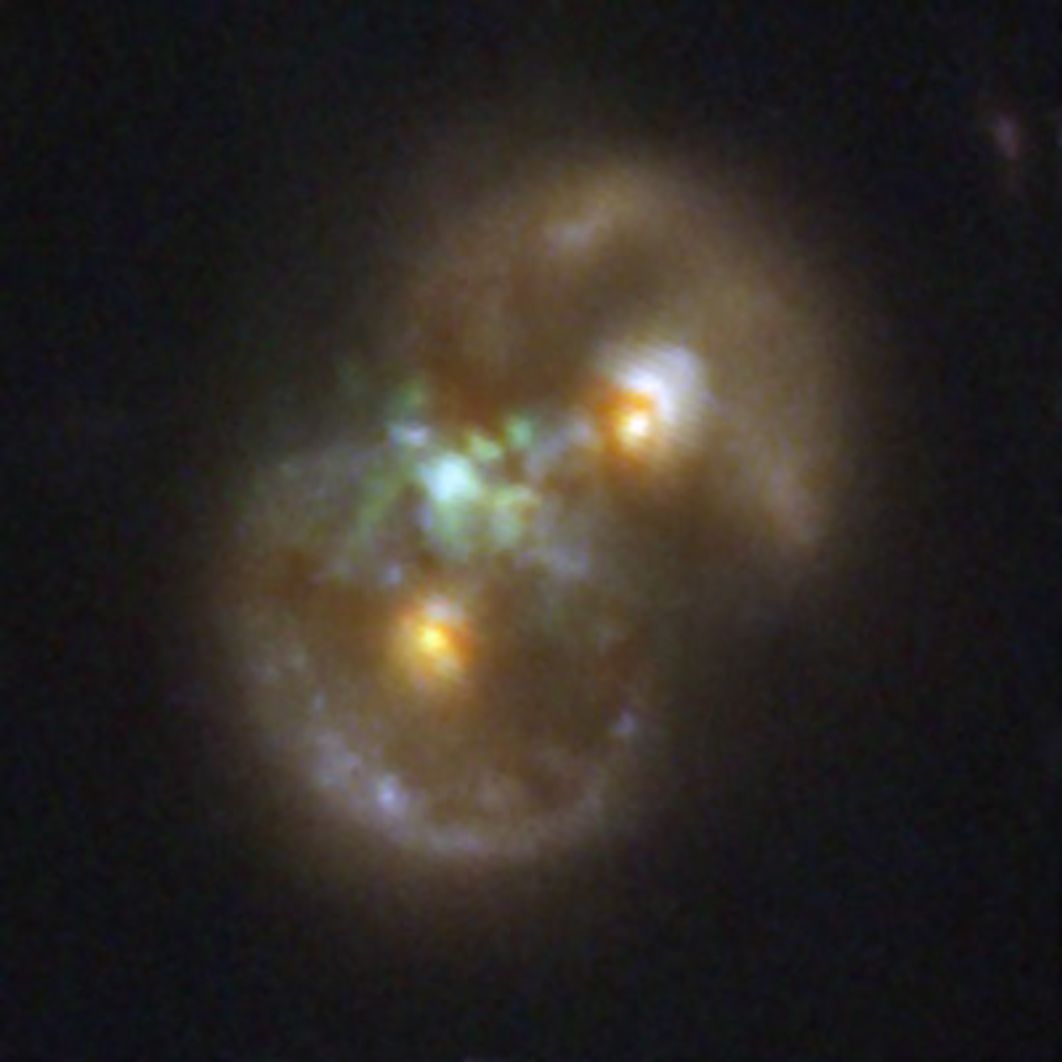
NASA’s James Webb Space Telescope has identified a supermassive black hole in a galaxy formed by the collision of two spirals—dubbed the “Infinity Galaxy.” Unusually, the black hole sits between the galactic cores, not within either, suggesting it may have formed directly from a collapsing gas cloud. This supports the “heavy seed” theory of black hole formation, offering a possible explanation for the rapid emergence of massive black holes in the early universe. Follow-up data confirms active growth and surrounding ionized gas. The heavy seed theory proposes that some supermassive black holes formed directly from the collapse of massive, pristine gas clouds—rather than growing slowly from smaller stellar remnants. This direct-collapse process bypasses the intermediate stages of star formation, explaining how massive black holes could appear in the early universe when there wasn’t time for gradual growth.
This NIRCam image from NASA’s James Webb Space Telescope shows the Infinity Galaxy—a merger of two spiral galaxies—featuring dual stellar rings and yellow-colored galactic nuclei. Ionized hydrogen appears in green between the galaxies, where astronomers have identified a million-solar-mass black hole possibly formed through direct collapse. The image maps near-infrared light with blue (0.9 microns), green (1.15–1.5 microns), and red (2.0 microns) filters. (Credit: P. van Dokkum (Yale University) / NASA / ESA / CSA / STScI)
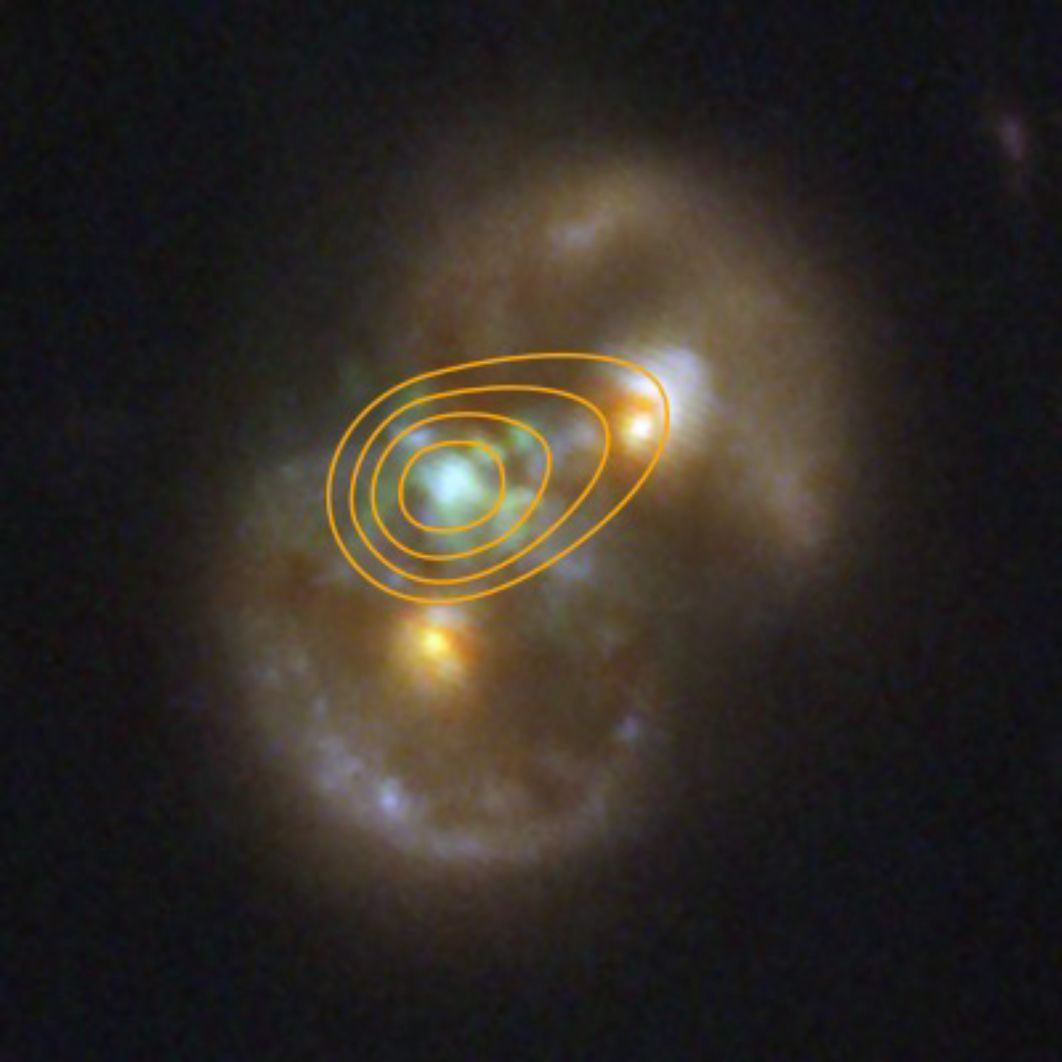
This NIRCam image of the Infinity Galaxy from NASA’s James Webb Space Telescope is overlaid with a contour map based on radio data from the Very Large Array. The central radio emission aligns precisely with the infrared glow between the two galactic nuclei, indicating the presence of a supermassive black hole. These radio signals help scientists study how the black hole draws in surrounding material and assess its energy output. (Credit: NASA, ESA, CSA, STScI, VLA, P. van Dokkum (Yale University))
Interstellar Visitor, Comet 3I/ATLAS : Gemini North Telescope, Hawai’i
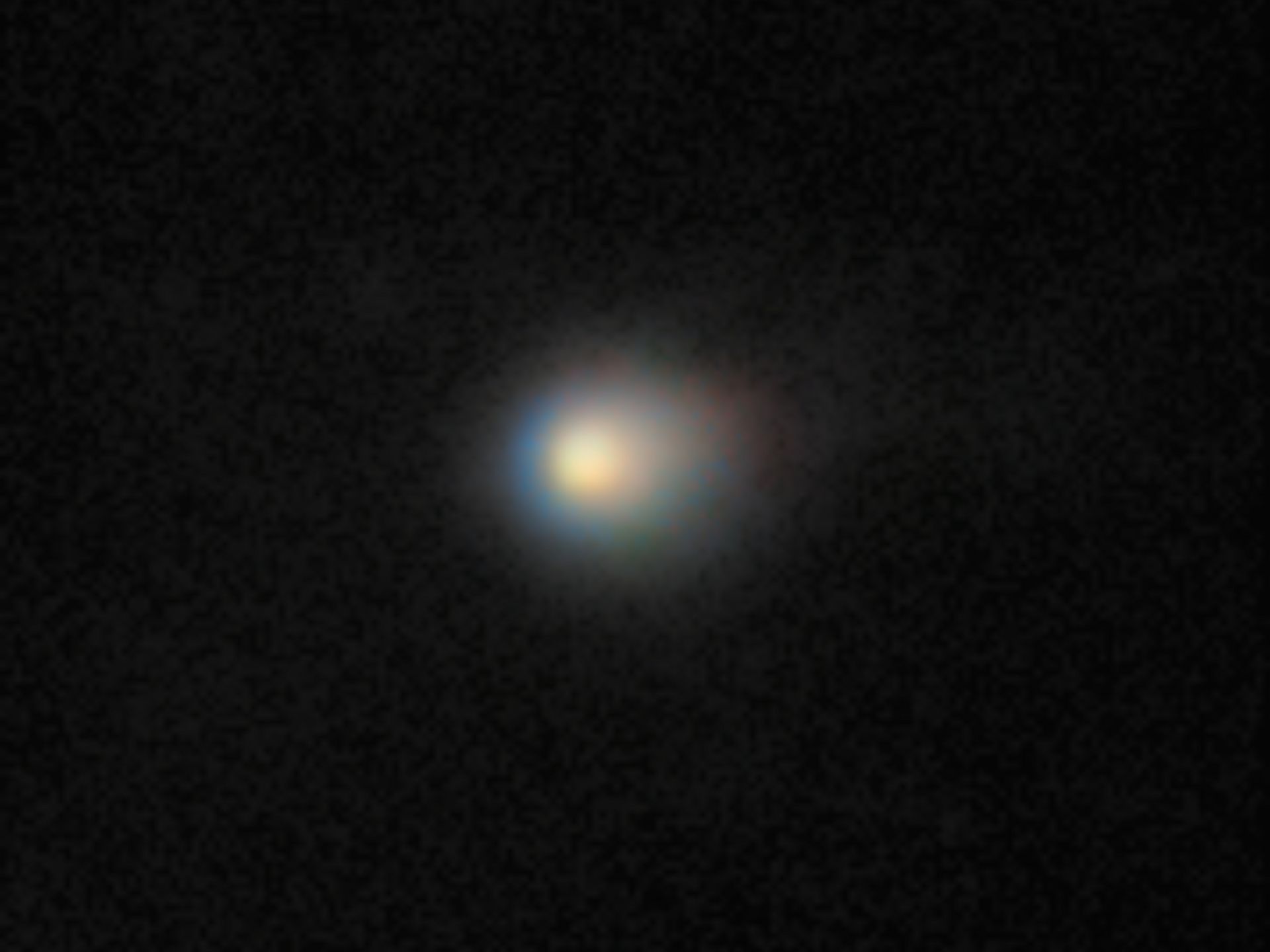
Last week, astronomers had identified 3I/ATLAS, estimated with a two-thirds chance that it predates our 4.5-billion-year-old solar system. Now, astronomers have confirmed this, only the third known interstellar object, using the Gemini North telescope in Hawai‘i. Detected on July 1, 2025, the comet exhibits a highly hyperbolic orbit and a compact coma, distinguishing it from previous interstellar visitors. Estimated at up to 20 kilometers wide, it offers a rare opportunity to study material from beyond the solar system. As it nears the Sun, global observatories are racing to characterize its composition and trajectory before it resumes its journey through interstellar space.
This image of the comet by the Gemini North telescope shows the comet’s compact coma — a cloud of gas and dust surrounding its icy nucleus. (Credit: International Gemini Observatory/NOIRLab/NSF/AURA/K. Meech (IfA/U. Hawaii); Image Processing: Jen Miller & Mahdi Zamani (NSF NOIRLab))
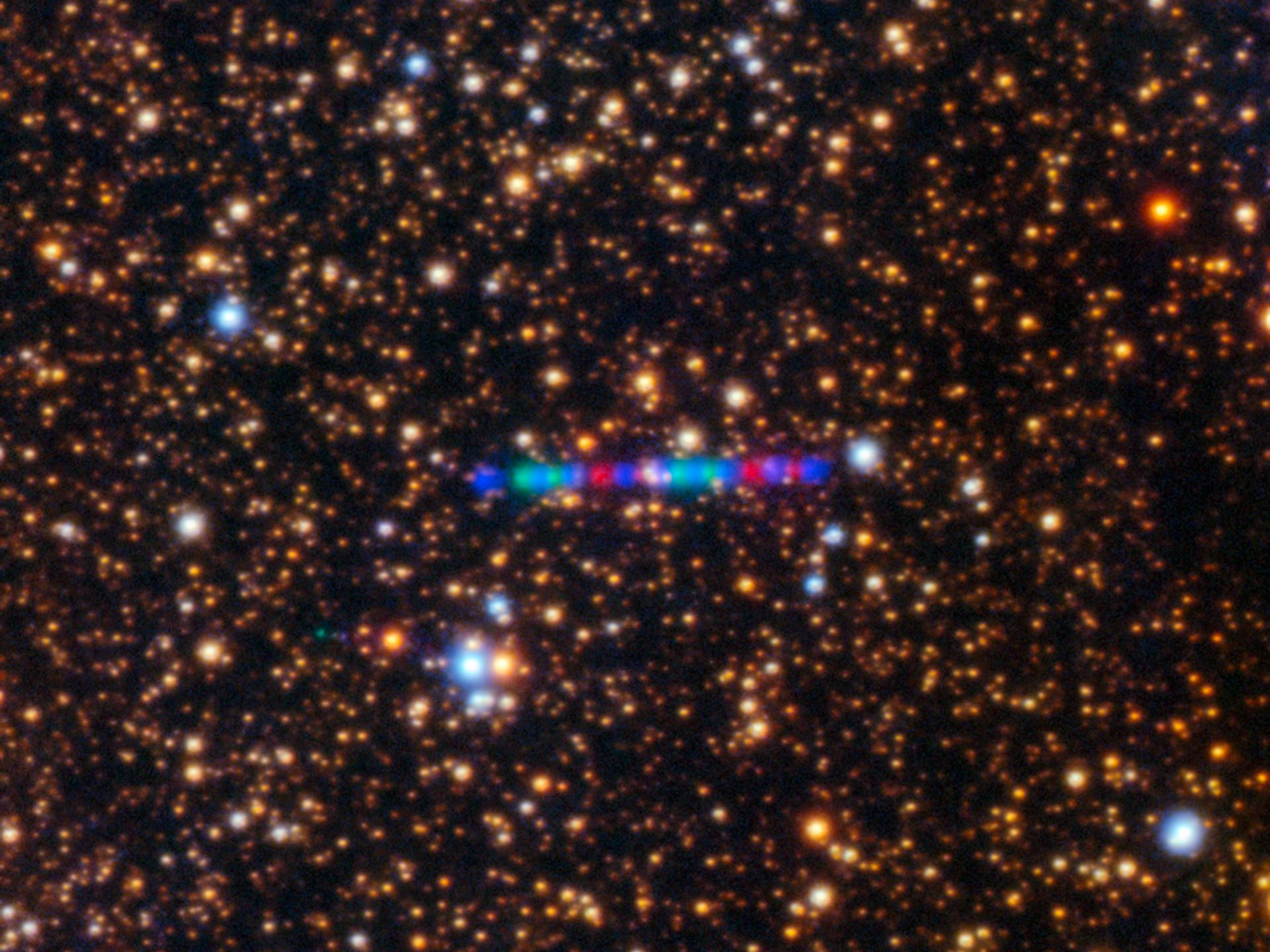
In this image from the Gemini North telescope’s Gemini Multi-Object Spectrograph (GMOS-N), Comet 3I/ATLAS appears against a dense backdrop of stars. Shown here is the comet’s vivid path through the Solar System, captured using three filters rendered in red, green, and blue. (Credit: International Gemini Observatory/NOIRLab/NSF/AURA/K. Meech (IfA/U. Hawaii); Image Processing: Jen Miller & Mahdi Zamani (NSF NOIRLab))

SCIENCE
Gravitational Waves Reveal Record-Breaking Black Hole Merger
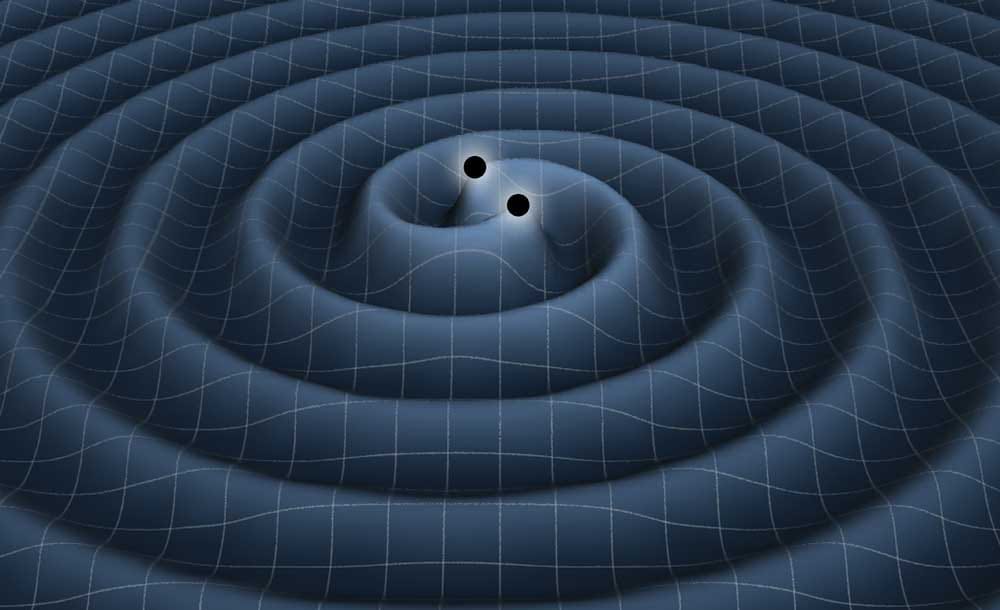
This rendering shows the gravitational waves generated by two black holes orbiting each other. (Credit: NASA)
14 July, 2025
Scientists from the LIGO-Virgo-KAGRA collaboration have detected the most massive black hole merger ever observed via gravitational waves. Designated GW231123, the event occurred on November 23, 2023, and involved black holes of approximately 100 and 140 solar masses, forming a final object over 225 times the mass of the Sun. The merger challenges current stellar evolution models, which do not predict black holes of this scale forming naturally. Researchers suggest the progenitor black holes may themselves have formed through earlier mergers.
Adding to the complexity, at least one of the black holes was spinning near the theoretical limit allowed by general relativity, making the signal difficult to model and interpret. The detection pushes the boundaries of gravitational-wave instrumentation and theoretical modeling, highlighting the need for refined analytical tools. GW231123 was presented at the GR24-Amaldi16 conference in Glasgow, Scotland, on July 14, with calibrated data made available for further study.
LIGO, Virgo, and KAGRA—short for Laser Interferometer Gravitational-Wave Observatory, European Virgo interferometer, and Kamioka Gravitational Wave Detector—form a global network of observatories located respectively in the United States (Washington and Louisiana), Italy (near Pisa), and Japan (Kamioka, Gifu Prefecture). Together, they collaborate to detect and analyze gravitational waves from cosmic events such as black hole and neutron star mergers.
Tiangong Space Station Receives Record 7.2 Tons of Supplies From Tianzhou-9 Including Upgraded EVA Suits

A rendering of China's Tiangong space station orbiting the Earth. (Credit: China Manned Space Engineering Office)
14 July, 2025
China launched the Tianzhou-9 cargo spacecraft to its Tiangong (Heavenly Palace) space station on July 14, delivering a record 7.2 tons of supplies, including upgraded extravehicular activity (EVA) suits and scientific equipment. The new spacesuits extend operational life from three years and 15 spacewalks to four years and 20, reflecting China’s intent to support longer-duration missions. Also aboard were food, fuel, and a core muscle training device to enhance onboard health infrastructure.
This is the ninth Tianzhou mission since 2017 and illustrates China’s growing logistical capacity in low Earth orbit. The Tiangong station, completed in 2022, remains about 20% the mass of the ISS but is expected to expand. With the Shenzhou 20 crew currently onboard, the delivery marks the next step in China’s broader efforts to sustained human presence and autonomous station operations. As international competition intensifies, Tiangong’s evolving architecture and support systems signal Beijing’s strategic investment in orbital permanence and crewed spaceflight resilience
ESA-Funded, UK-Led Consortium to Develop Reusable Hypersonic Spaceplace, INVICTUS
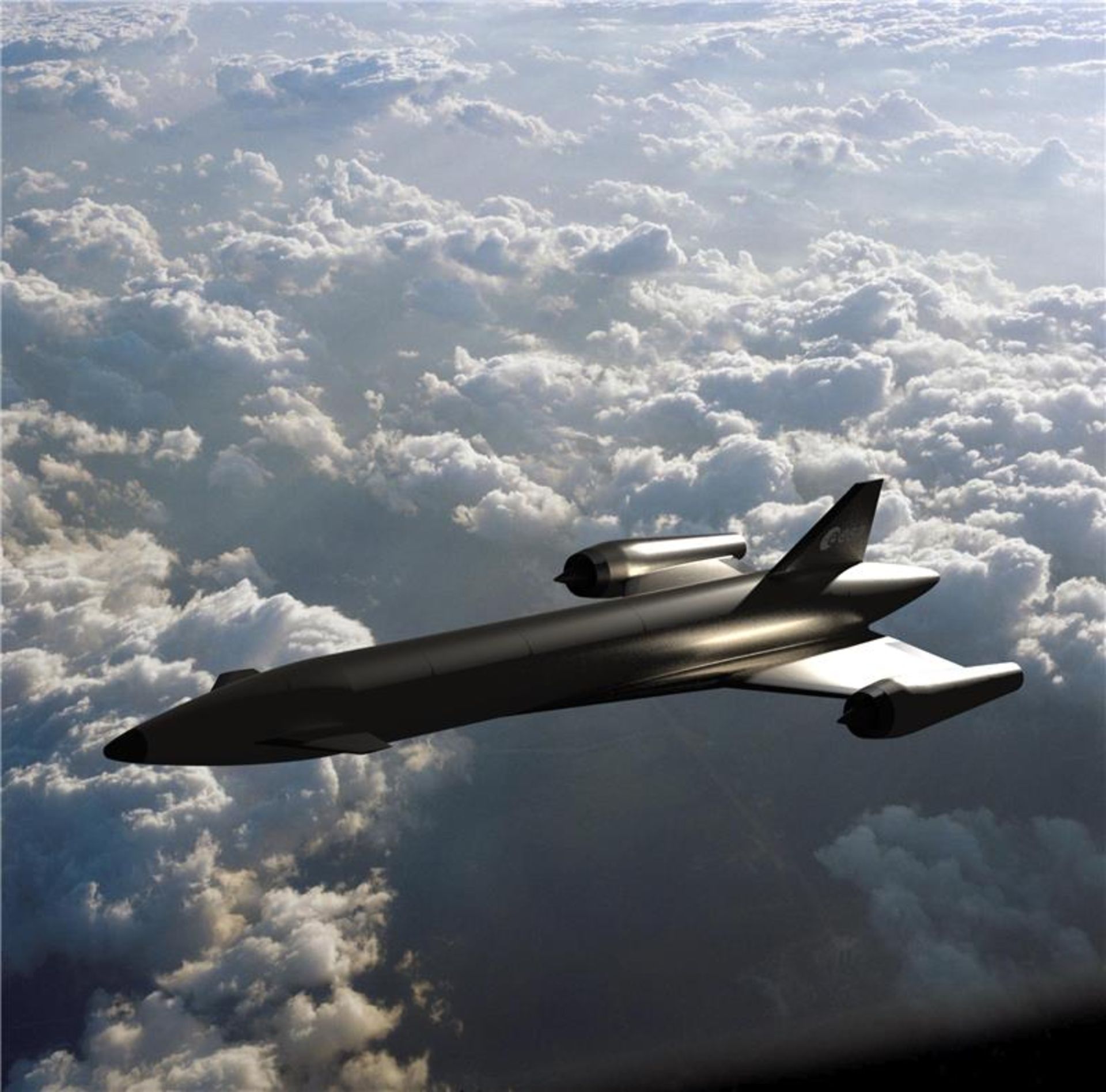
A rendering of a sleek hypersonic, reusable, Mach 5 and horizontal launch capable test vehicle designed under ESA’s INVICTUS program soars above the clouds, showcasing Europe’s push toward. (Credit: Frazer-Nash)
Frazer-Nash Consultancy has announced INVICTUS, a €7 million/$9.4 million European Space Agency–funded initiative to design a hypersonic, Mach 5-capable aircraft for horizontal space launch by 2031. The program aims to develop a reusable vehicle that takes off like a conventional aircraft, leveraging hydrogen-fueled, precooled air-breathing propulsion. This approach could reduce launch costs and expand access to space.
The consortium, led by Frazer-Nash ,includes Spirit AeroSystems, Cranfield University, and small-medium enterprises, with technical input from experts from the now-defunct Reaction Engines Ltd, known for its precooler technology. Before going bankrupt last year, Reaction Engines had aimed to build a the Skylon space plane, and the pre-cooler technology was meant for its Synergetic Air-Breathing Rocket Engine (SABRE). The system cools incoming air to enable jet engines to operate at hypersonic speeds, overcoming thermal limits that typically constrain flight at Mach 5.
INVICTUS is positioned as a dual-use platform, with potential applications in both commercial and defense sectors. It also reflects broader European ambitions to lead in reusable hypersonic systems.
New Strategy Urges US to Accelerate Space Nuclear Power Development
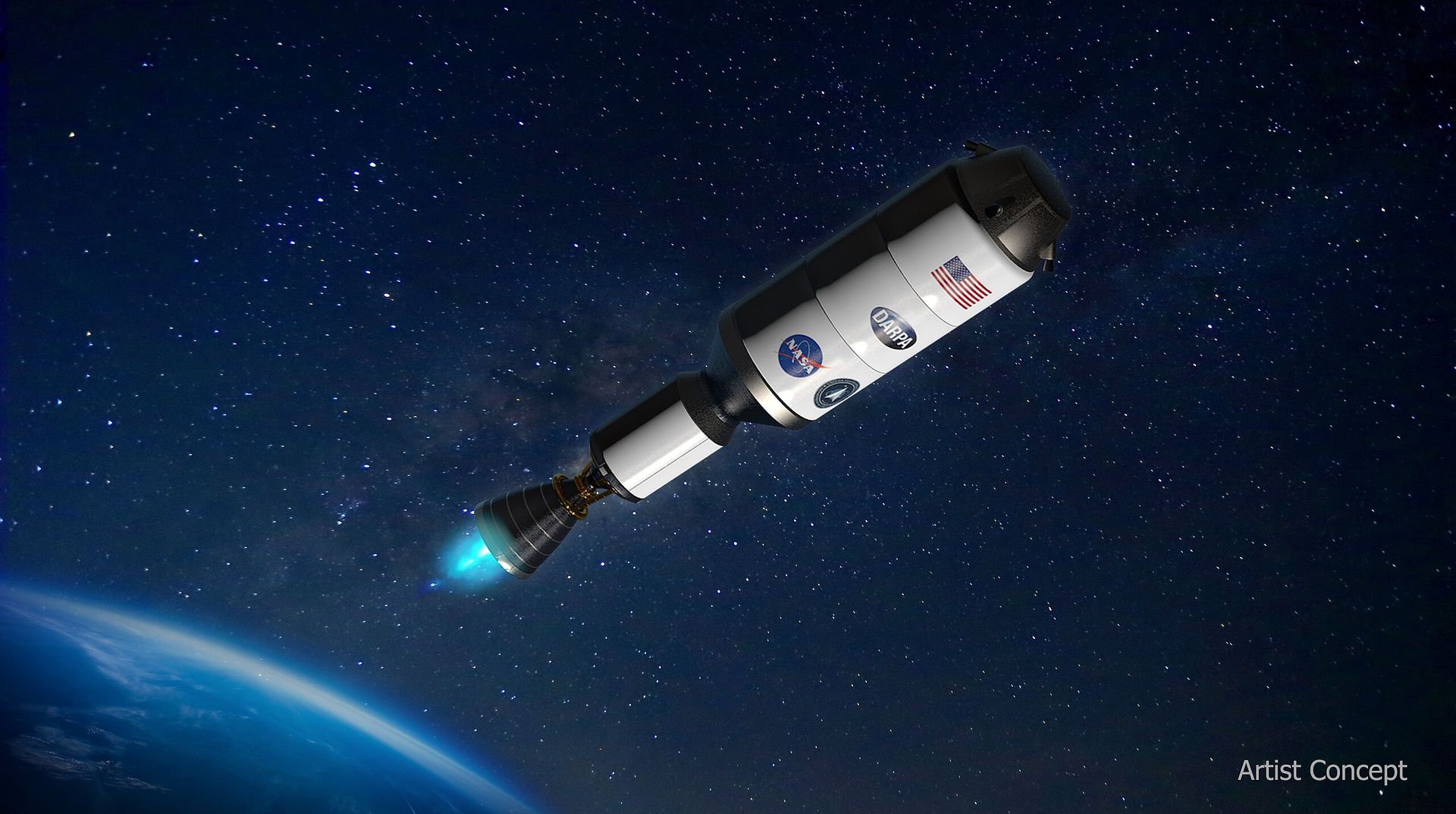
A render of Demonstration for Rocket to Agile Cislunar Operations (DRACO) spacecraft, which will demonstrate a nuclear thermal rocket engine. Nuclear thermal propulsion technology could be used for future NASA crewed missions to Mars. (Credit: DARPA)
16 July, 2025
A new strategy report urges the U.S. to accelerate development of space nuclear power systems, citing decades of stalled progress and rising geopolitical competition. Despite billions invested since 1965, no operational fission reactor has flown in space. The study, co-authored by Bhavya Lal and Roger Myers and funded by Idaho National Laboratory, identifies “mission pull” as the missing link, arguing that without real operational demand, programs collapse. China and Russia’s plans for a megawatt-class lunar reactor underscore the urgency.
The report, titled, “Weighing the Future: Strategic Options for U.S. Space Nuclear Leadership,” outlines three pathways: a flagship 100–500 kWe government-led demo; dual public-private partnerships for smaller reactors; and a low-power radioisotope hedge. All options hinge on regulatory reform, infrastructure investment, and centralized leadership. The authors advocate starting with power and not propulsion, to build credibility and industrial capacity. Without decisive action, the U.S. risks ceding strategic advantage in space nuclear technology to first movers who may shape future norms and governance.
Chang’e 6 Samples Reveal Volcanic and Magnetic History of Moon’s Far Side
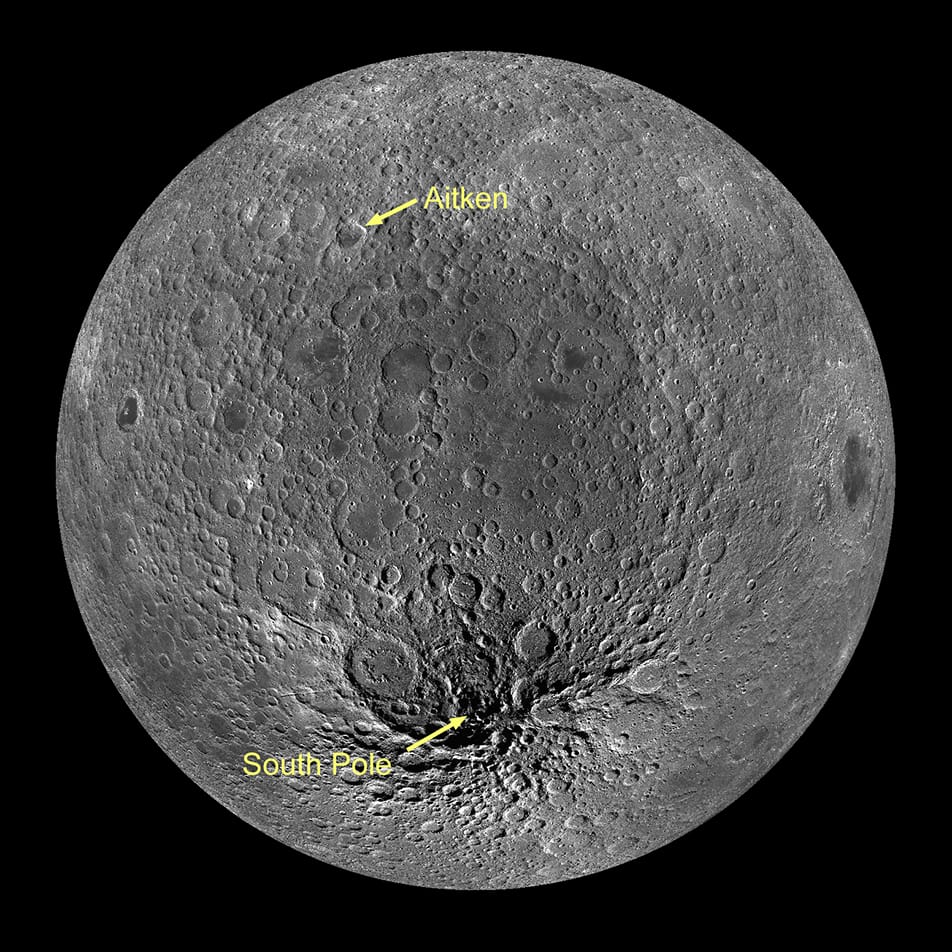
Measuring roughly 2,500 kilometers in length, the South Pole–Aitken basin links the southern lunar pole to the far-side Aitken crater. (Credit: NASA/GSFC/Arizona State University)
16 July, 2025
China’s Chang’e 6 mission has returned the first-ever samples from the moon’s far side, offering new insights into its geological evolution. Collected from the South Pole–Aitken basin (SPA), the samples reveal two distinct volcanic phases—one 4.2 billion years ago linked to the basin’s formation, and another 2.8 billion years ago from deep mantle activity. Geochemical analysis shows the far-side mantle is depleted in elements like thorium and contains even less water than near-side samples, suggesting a drier and more chemically distinct interior.
The samples also preserve evidence of a fluctuating ancient magnetic field, which rebounded around 2.8 billion years ago, possibly driven by convective mantle processes. These findings challenge existing models of lunar formation and highlight the role of massive impacts in shaping planetary interiors. As researchers call for more far-side sampling beyond the SPA basin, Chang’e 6 marks a pivotal step in decoding the moon’s hemispheric asymmetry. The Chang'e 6 results were published in four papers, 1, 2, 3, 4, recently, in the journal Nature.
Chinese Researchers Demonstrate Sunlight-Powered Extraction of Water & Oxygen From Lunar Soil

Chang’E-5 lunar soil sitting at the bottom of a photothermal reactor. (Credit: Sun et al.)
16 July, 2025
Chinese researchers have developed a one-step method to extract water and produce oxygen and methane from lunar regolith using sunlight, potentially supporting future moon bases. The process involves using sunlight to heat ilmenite-rich soil to 392 degrees Fahrenheit/200 degrees Celsius, to release water, then catalyzing a reaction with carbon dioxide, such as astronaut exhalation, to generate breathable air and rocket fuel. Unlike previous multi-step systems requiring Earth-imported catalysts, this technique uses lunar soil directly, reducing cost and complexity.
Shipping a gallon of water by rocket costs approximately $83,000, with each astronaut consuming about 15 liters daily. While promising, experts caution that lunar regolith’s insulating properties may hinder heat penetration, and astronauts may not produce sufficient CO₂ for sustained fuel generation. Alternatives like reusable Earth-based catalysts could offer better efficiency. The findings, based on simulants of Chang’e 5 samples, highlight the moon’s resource potential but also the engineering challenges of scaling such systems under extreme lunar conditions. The study was published on July 16 in the journal Joule.
Study Finds Over 200 Exoplanets May Be Larger Than Previously Estimated, Suggesting Earth-Size Worlds Are Less Common Than Expected

A rendering of an exoplanet host with several background stars. If left uncorrected, the additional light from the background stars can lead to underestimated exoplanet size measurements. The square grid represents individual pixels from NASA’s TESS satellite. (Credit: Nikolai Berman / UC Irvine)
17 July, 2025
Astronomers at UC Irvine have found that over 200 known exoplanets may be significantly larger than previously estimated, challenging assumptions about their composition and habitability. Using data from NASA’s TESS and Gaia missions, researchers corrected for light contamination from nearby stars, which had led to systematic underestimation of planetary sizes. The revised measurements suggest that many planets once thought to be Earth-sized are more likely “water worlds” or gaseous bodies akin to Neptune, raising questions about the true prevalence of rocky, Earth-like planets.
This recalibration has implications for the search for extraterrestrial life and the prioritization of targets for follow-up observations with instruments like the James Webb Space Telescope. The study also sheds light on the need for caution when interpreting transit data, especially in crowded stellar fields. As the catalog of exoplanets grows, refining measurement techniques will be critical to understanding planetary diversity and assessing biosignature potential. The research was published in the Astrophysical Journal Letters.
NASA’s TRACERS Satellites to Study Magnetic Reconnection in Earth’s Magnetosphere
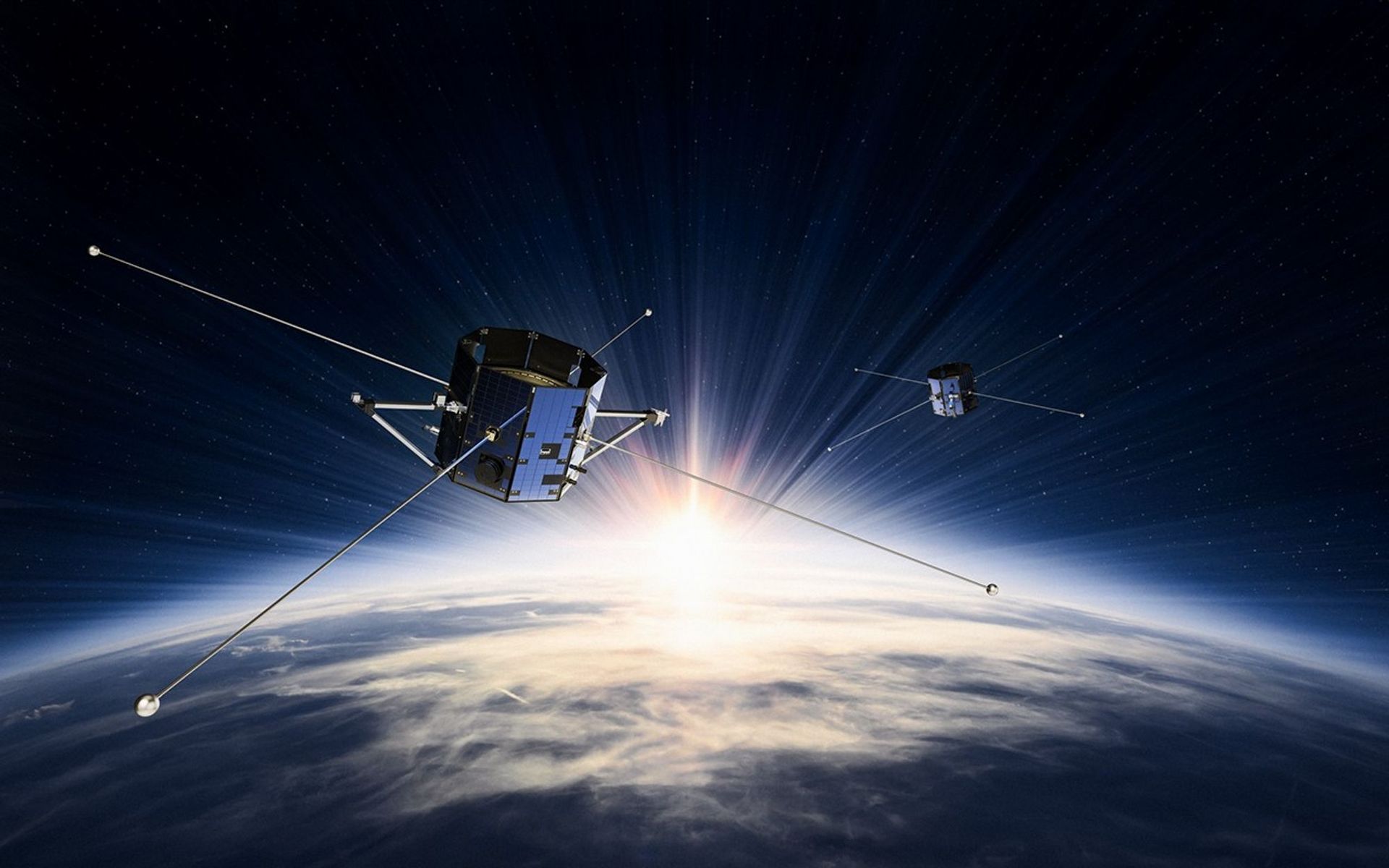
An artist's rendering of the two TRACERS spacecraft in low-Earth orbit. (Credit: University of Iowa/Andy Kale)
18 July, 2025
NASA’s TRACERS mission is scheduled to launch July 22 aboard a SpaceX Falcon 9 from Vandenberg Space Force Base, alongside three small satellites. TRACERS—short for Tandem Reconnection and Cusp Electrodynamics Reconnaissance Satellites—will study how solar wind interacts with Earth’s magnetosphere, a region critical to satellite operations, communications, and astronaut safety. It will study magnetic reconnection—an energy release process triggered when solar wind disturbs Earth’s magnetosphere. Magnetic field lines break and reconnect, rapidly releasing energy and reshaping plasma flows in space. Flying in tandem through the polar cusps, the satellites will capture near-simultaneous measurements of electric and magnetic fields, helping scientists understand how space weather evolves and affects terrestrial systems like GPS, power grids, and satellite operations.
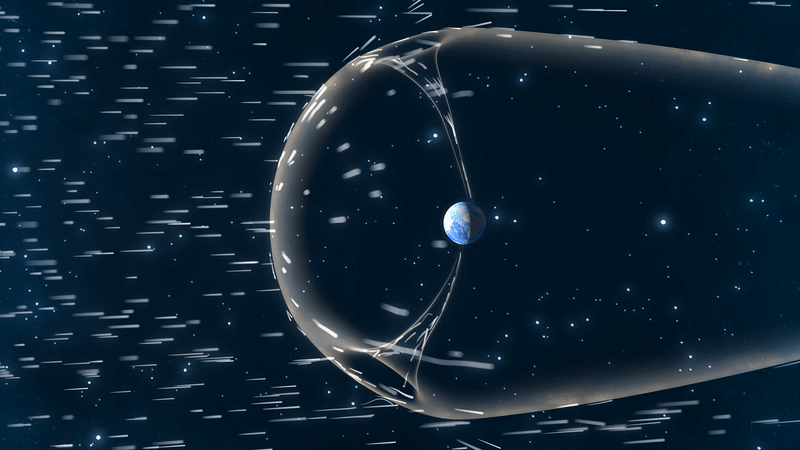
Earth is protected by a giant magnetic bubble known as our magnetosphere. However, the solar wind can still impinge on our planet’s atmosphere through the polar cusps, two funnels in that magnetic field that allow some particles through. The particles that pass through the cusp carry signatures of the magnetic interactions that happen where the solar wind meets our magnetosphere. (Credit: NASA/CILab/Josh Masters)
Unlike previous missions that offered isolated snapshots, TRACERS’ dual configuration enables dynamic tracking of reconnection events. The mission complements existing heliophysics efforts, including NASA’s Magnetospheric Multiscale Mission and PUNCH, by focusing on near-Earth interactions. As solar activity intensifies, TRACERS aims to improve predictive models and bolster infrastructure resilience. The $170 million initiative aims to mitigate space weather risks through affordable, distributed observation platforms and international collaboration.
Also launching are Athena EPIC, a modular remote-sensing SmallSat; PExT, a communications demo enabling spacecraft to switch networks like mobile phones; and REAL, a CubeSat from Dartmouth College investigating how high-energy particles scatter into Earth’s atmosphere. REAL marks New Hampshire’s first CubeSat launch under NASA’s CubeSat Launch Initiative. The TRACERS mission is led by the University of Iowa with support from multiple institutions, and managed by NASA’s Heliophysics Division.

GOVERNANCE
Trump Administration Scraps Hosting of Key Climate Science Report, National Climate Assessment, Online
14 July, 2025
NASA has declined to host the National Climate Assessment (NCA) on its website, citing no legal obligation to do so despite earlier White House statements indicating it would serve as the new platform following the shutdown of globalchange.gov. The NCA, a peer-reviewed report issued every four to five years, outlines climate risks across U.S. regions and informs local mitigation strategies. NASA’s decision complicates public access to the report, raising concerns about transparency and long-term support for climate research.
Earlier this month, government websites hosting national climate assessments were taken offline. These reports guide local adaptation to climate change. The White House said NASA would host them to meet a 1990 legal requirement, a plan the agency said it intended to follow.
The move follows broader budgetary tensions, including proposed cuts to NASA’s science funding and the dismissal of hundreds of scientists working on the next NCA. While past reports remain archived by NOAA, no agency has been formally assigned to host future assessments. The breakdown in access and institutional continuity shows the growing friction between executive directives and scientific mandates, with implications for public trust in Earth observation programs and climate policy accountability.
FY26 Budget Debate, NASA Protest Highlights Rift Over NASA Science, Workforce: NASA Leadership Criticized for Preemptively “Defunding & Shutting Down”

Credit: The White House
15 July, 2025
The recently enacted “One Big Beautiful Bill Act” allocates nearly $10 billion to NASA’s human spaceflight programs, including Artemis 4 and 5, the Lunar Gateway, and continued ISS operations, reversing earlier proposals to terminate these efforts after Artemis 3. However, the same administration’s FY26 budget request proposes a 24% cut to NASA’s overall funding, with a 47% reduction to its Science Mission Directorate. This would cancel dozens of active and planned missions, including Mars Sample Return, VERITAS, DAVINCI, and contributions to international collaborations.
15 July, 2025
U.S. Congressional appropriators have pushed back. Both House and Senate committees rejected the proposed cuts, recommending flat or slightly increased funding for NASA, including $24.8 billion in the House draft and $24.9 billion in the Senate version. The draft Commerce-Justice-Science bill also allocates nearly $2 million to the National Space Council, despite its lack of formal reestablishment. While the bill reduces NASA’s science funding to $6 billion, it preserves key programs like Artemis and the Space Launch System (SLS), countering plans to terminate them post-Artemis III. The move reflects bipartisan concern over U.S. space leadership, particularly in light of China’s lunar ambitions.
17 July, 2025
Democratic committee leaders also criticized NASA leadership for illegally impounding congressionally appropriated FY25 funds by prematurely implementing budget cuts aligned with the Trump administration’s proposed FY26 reductions. In a letter to Interim Administrator Sean Duffy, lawmakers warned that such actions violate the Constitution’s separation of powers and threaten U.S. leadership in space. Reuters reports that executing proposed cuts before congressional approval may breach federal budget law, raising concerns over mass layoffs and program cancellations. Lawmakers demanded NASA publicly affirm its commitment to spending all appropriated funds as directed, amid growing scrutiny of executive influence over agency operations.
18 July, 2025
Amid this turmoil, NASA employees are organizing a “Moon Day” protest on July 20, in Washington D.C., marking the Apollo 11 anniversary with calls to halt mass layoffs and premature program closures. Workers cite declining morale, opaque Reduction in Force planning, and pressure to accept voluntary resignations under the Deferred Resignation Program. Some scientists are considering relocating abroad to continue work on missions like LISA, which face cancellation despite years of investment.
These developments indicate a widening rift between executive budget priorities and legislative intent, with implications for U.S. leadership in space science. While crewed exploration receives bipartisan support, the fate of NASA’s scientific portfolio remains uncertain, caught between political directives, institutional compliance, and grassroots resistance.

MILITARY
US Lawmakers Urge Space Force to Expand Commercial Surveillance Programs: Funding Proposed for TacSRT and VLEO Surveillance Initiatives

The Trident Pier, shown on the Gaza coast as of May 16, remained functional for 20 days, facilitating the delivery of 8,800 tonnes (19.4 million pounds) of humanitarian aid. Despite all the fanfare, AP News reports the outcome fell short of initial expectations and aid distribution was inconsistent. (Credit: U.S. Central Command via AP)
15 July, 2025
U.S. Lawmakers want to formally fund and expand the U.S. Space Force’s Tactical Surveillance, Reconnaissance and Tracking (TacSRT) program, which leverages commercial satellite services for rapid intelligence delivery. Despite its operational success in missions like the Gaza pier construction and Niger base withdrawal, TacSRT has relied on congressional add-ons rather than Pentagon budget requests. The House Armed Services Committee has proposed $50 million and directed the Air Force to make TacSRT, a “surveillance-as-a-service” program, a program of record.
In parallel, Congress is pushing the Space Force to explore very low Earth orbit (VLEO) for tactical surveillance. VLEO is a portion of LEO characterized by orbital paths no higher than 450 kilometers above Earth. It offers advantages such as sub-20 cm ground resolution, low latency, and reduced detectability—making it suitable for denied-area sensing and time-sensitive targeting. Amendments propose $6 million for VLEO studies and system development, with a briefing due by March 2026. The push reflects growing interest in integrating commercial innovation and orbital diversity into U.S. defense strategy.
Space Force Releases Guidelines for Commercial Space Access Resourcing, Outlines Principles for Launch Resource Allocation
16 July, 2025
The U.S. Space Force has released a new annex to its Commercial Space Strategy outlining nine principles for space access resourcing decisions. Published July 16, the document formalizes how the service will evaluate commercial sector requests for government resources and guide investment strategies across acquisition, infrastructure, and property allocation. The principles are legally grounded and aim to balance national security needs with the growth of a competitive commercial space industry. Officials emphasized that assured access to space is foundational to both defense and civilian life, and that commercial innovation serves as a force multiplier for U.S. capabilities.
The annex reflects a shift from Cold War-era government dominance in launch activities to a landscape where commercial providers now lead the manifest. It signals a commitment to strategic partnerships and transparent decision-making as the Space Force adapts to a proliferated and contested orbital environment. The move also aligns with broader efforts to integrate commercial assets into defense planning.
Space Force Accepts Long-Delayed GPS OCX System for Final Testing
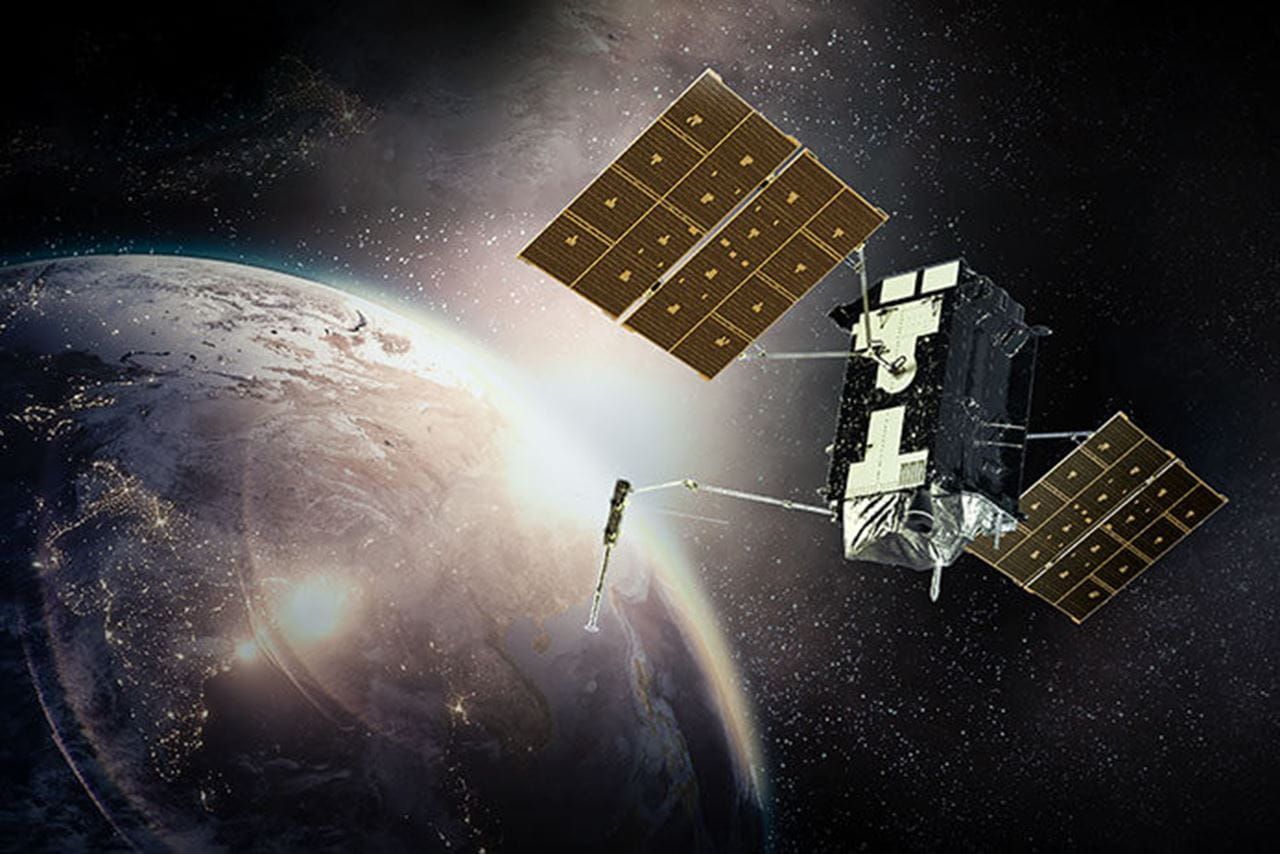
A rendering of a GPS satellite. (Credit: RTX)
16 July, 2025
After years of delays and cost overruns, the U.S. Space Force officially accepted the GPS Next Generation Operational Control System (OCX) from contractor RTX on July 1. Originally projected to be operational by 2017 at a cost of $3.7 billion, OCX is now expected to enter service in late 2025 with a final price tag of $7.7 billion. The system will enable enhanced GPS capabilities, including anti-jamming, improved accuracy, and secure geolocation via M-Code. While not yet operational, OCX has completed transition exercises and will undergo final testing before full deployment.
The program’s troubled history, marked by a Nunn-McCurdy breach and criticism from senior officials, reflects broader challenges in defense software acquisition. A Nunn-McCurdy breach occurs when a major U.S. defense acquisition program experiences a significant cost overrun, exceeding specific thresholds defined by the Nunn-McCurdy Act. The Space Force is already investing in OCX’s next phase, Block 3F, to support GPS III Follow-On satellites launching in 2027. The shift toward iterative development and modular upgrades signals a departure from legacy procurement models in favor of more agile, software-defined architectures.
Solestial Secures SpaceWERX Contract to Develop Fast-Assembly Solar Array Wing
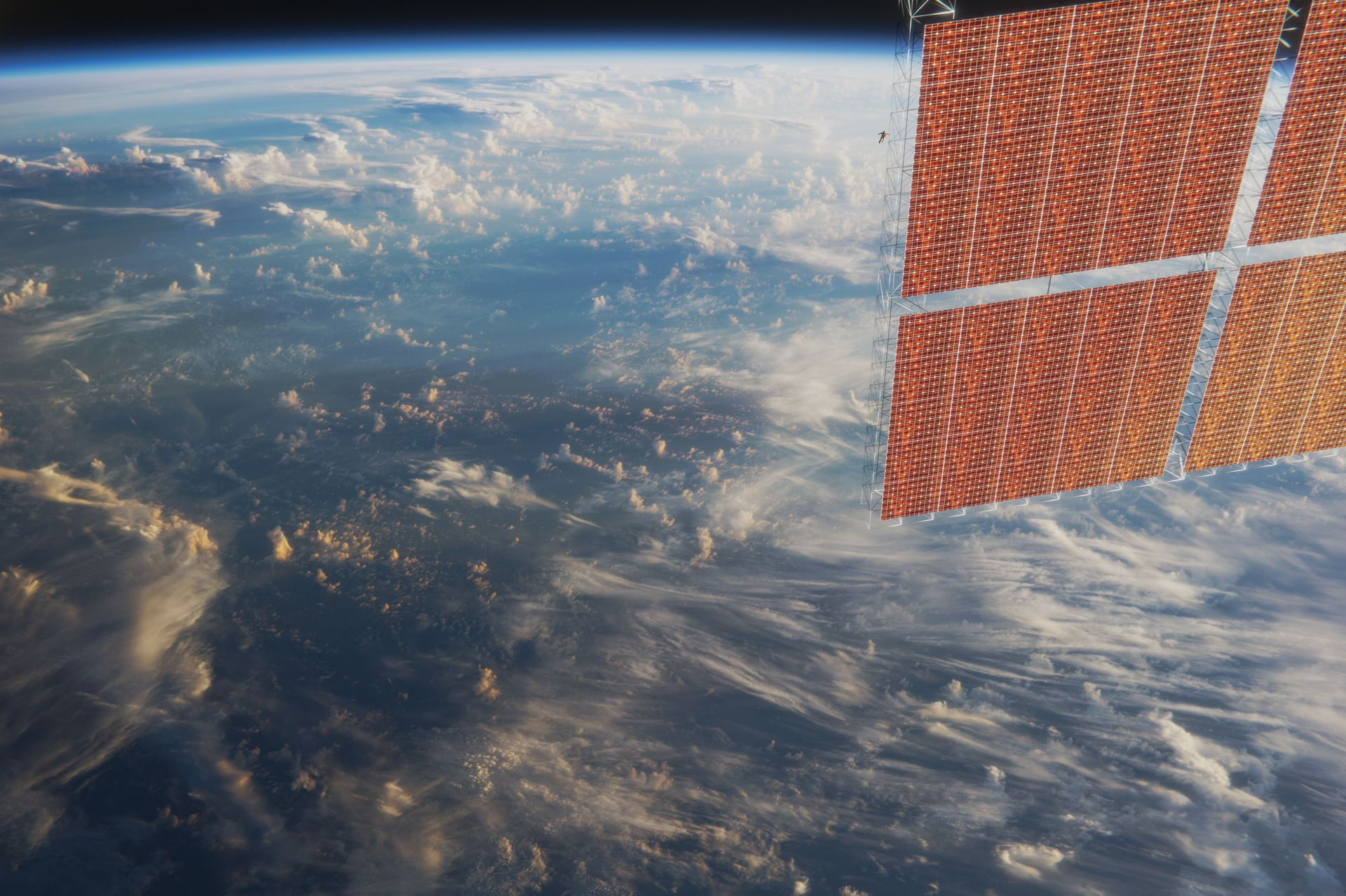
A render of Solestial’s solar array wing on a satellite in orbit. (Credit: Solestial)
16 July, 2025
Solestial has been awarded a $1.2 million Direct-to-Phase II contract by SpaceWERX to develop a fast-manufacturing solar array wing for small satellites. The project aims to optimize Solestial’s low-mass, radiation-hardened silicon solar cells and build a complete array within one month, addressing long-standing bottlenecks in space solar manufacturing. The initiative supports the Department of the Air Force’s push for rapid, scalable energy solutions in orbit, aligning with broader efforts to strengthen the U.S. defense industrial base.
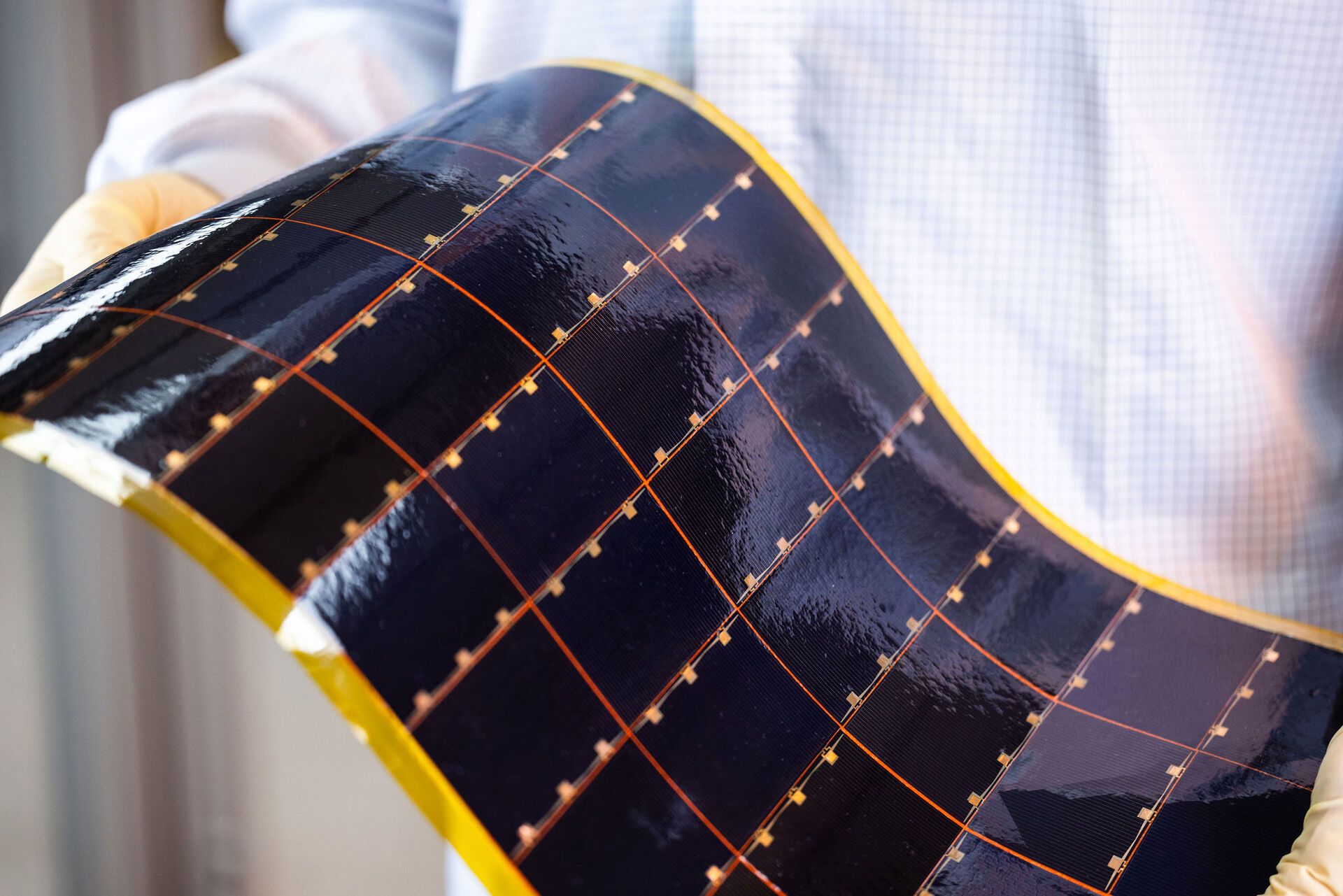
Solestial’s solar power module. (Credit: Solestial)
Solestial’s approach leverages automated production and flexible module design to reduce costs compared to traditional III-V solar technologies. The company has previously secured over $7 million in SBIR contracts from agencies including NASA and the Air Force Research Laboratory. As the Space Force seeks to integrate commercial innovation into its operational architecture, Solestial’s work reflects a growing emphasis on modular, resilient infrastructure for proliferated satellite constellations and future lunar services.
York Space Systems to Acquire ATLAS in Move to Strengthen Space-to-Ground Capabilities
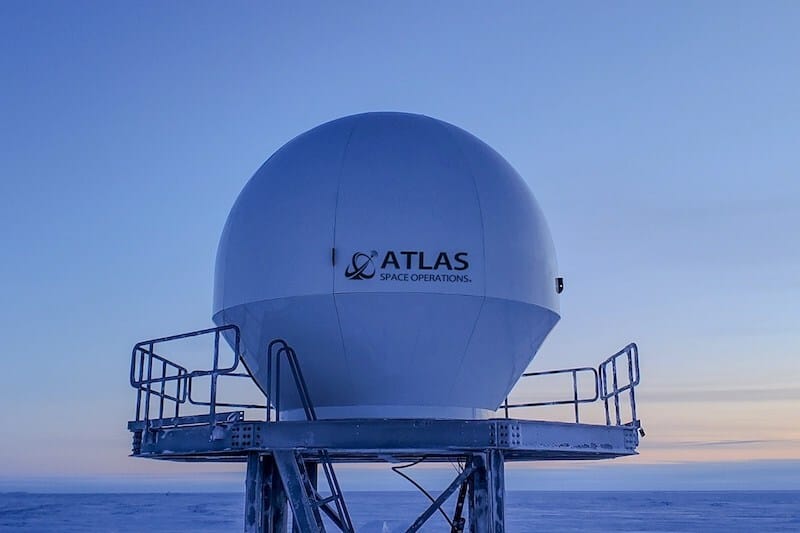
An antenna operated by Atlas Space Operations is located in Barrow, Alaska. (Credit: Atlas Space Operations)
18 July, 2025
U.S. defense contractor, York Space Systems’ parent company, AE Industrial Partners, has announced its acquisition of ATLAS Space Operations, a U.S.-based provider of Ground Software as a Service (GSaaS). The move integrates ATLAS’s cloud-native Freedom® platform and global antenna network into York’s spacecraft and software-defined operations, enhancing end-to-end mission delivery. ATLAS will continue operating independently, supporting commercial and government clients.
The acquisition is expected to bolster York’s Golden Dome architecture—a proposed homeland missile defense system—by unifying space and ground assets for real-time data flow and autonomous operations. With over 50 antennas in 20+ countries, ATLAS’s federated network enables automated scheduling and cloud-based data delivery, reducing cost and complexity. Pending FCC approval, the deal, like the SES-Intelsat merger, emphasizes a broader industry shift: legacy satellite firms are consolidating infrastructure to compete with LEO-native providers like Starlink and Kuiper. York’s strategy underscores the growing importance of integrated, software-led architectures in contested and data-intensive mission environments.
U.S. Defense Budget Highlights Operational Investments and Policy Riders
18 July, 2025
The U.S. passed the fiscal year 2026 Defense Appropriations Act on July 18 by a vote of 221 to 209, approving $831.5 billion in discretionary funding for the Department of Defense. The bill prioritizes modernization across air, sea, land, and space domains, including investments in fifth- and sixth-generation aircraft, nuclear triad upgrades, and hypersonic systems. Notably, it allocates approximately $13 billion for missile defense and space programs, supporting proliferated architectures and next-gen intelligence platforms aligned with the Golden Dome initiative.
The legislation also includes a 3.8% pay raise for military personnel and boosts funding for innovation units like DIU and APFIT. While the bill emphasizes strategic deterrence and industrial resilience, it does not fund the Space Force’s proposed MILNET constellation—a $4 billion low Earth orbit network for secure global communications—highlighting a gap between operational ambition and budgetary reality. The omission places MILNET atop the Space Force’s unfunded priorities list, underscoring congressional debates over how best to resource emerging space infrastructure.
Each year, military branches submit an unfunded priority list (UPL) to Congress. This is a wishlist of projects they consider important but weren’t included in the President’s budget request. It helps Congress see where military leaders believe additional investments would have the most impact—if extra funding becomes available.
Meanwhile, the Bill also codifies several executive policy positions from President Trump. These include prohibitions on funding for Diversity, Equity, and Inclusion (DEI) initiatives and Critical Race Theory, aligning with previously stated opposition to such programs. The bill backs restrictions on federal spending related to perceived government censorship efforts, citing free speech protections. It advances language to block funding for the United Nations Relief and Works Agency (UNRWA), referencing concerns over alignment with U.S. interests. Additional measures reinforce existing limitations on federal support for individuals advocating for marriage equality, and extend restrictions on funding for abortion-related travel, drag performances, and COVID-19 vaccine or mask mandates. These policy riders reflect ongoing debates over the intersection of defense spending, social policy, and executive authority.

COMMERCIAL
China Fast-Tracks Its Entry into Global LEO Connectivity Landscape
14 July, 2025
China is accelerating its entry into the low Earth orbit (LEO) broadband market, deploying satellites for its Qianfan constellation—also known as Thousand Sails—with plans for 14,000 satellites by 2030. Backed by nearly $1 billion in state-led funding, Qianfan is positioned as a strategic alternative to Western networks like Starlink, OneWeb, and more recently Amazon’s Kuiper, targeting telecom operators and government clients across Belt and Road nations.
The Kuiper constellation, now at 78 satellites following its July 16 launch, aims to deploy over 3,200 satellites and begin service by late 2025. SpaceX launched 24 satellites for its potential competitor, marking Kuiper’s third operational deployment and the first aboard a Falcon 9. Meanwhile, Starlink, with nearly 8,000 satellites already in orbit, maintains a first-mover advantage but faces regulatory and infrastructure challenges. OneWeb, backed by the French Eutelsat and the UK government, operates a smaller network of around 650 satellites and focuses on enterprise and government markets. A second Chinese constellation, Guowang, remains more opaque, fueling speculation about dual-use or military applications.
The race for LEO dominance is increasingly geopolitical, with governments weighing connectivity needs against digital sovereignty and surveillance concerns. China’s efforts mirror broader trends: satellite operators are now seen as national assets, entangled in defense, diplomacy, and infrastructure. As launch cadences rise and orbital congestion intensifies, the contest is no longer just about speed or coverage—it’s about who controls the backbone of global internet access in an era of strategic competition.
Axiom's Ax-4 Crew from India, Poland, & Hungary Complete ISS Visit: Mission Ends with Successful Pacific Recovery
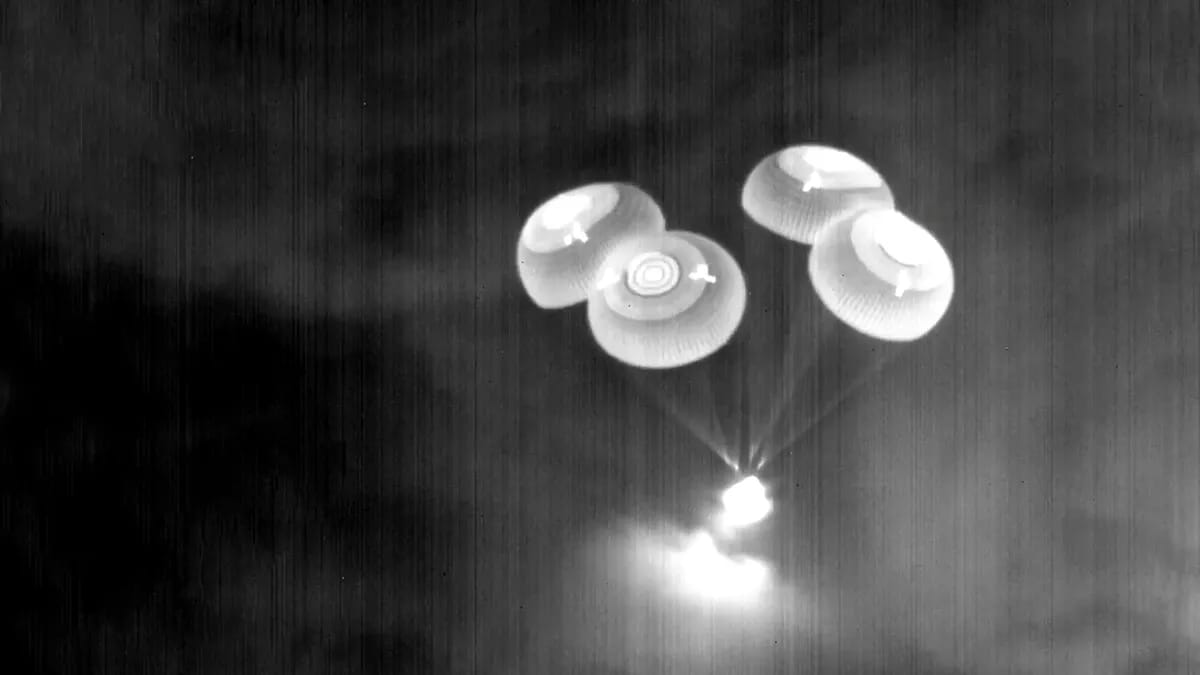
SpaceX Dragon "Grace" splashing down off the coast of San Diego, CA. (Credit: Axiom Space)
15 July, 2025
Axiom Mission 4 (Ax-4) concluded its 18-day stay aboard the International Space Station with a splashdown off California on July 15, marking a milestone in commercial and international spaceflight. Led by veteran astronaut Peggy Whitson, the crew included representatives from India, Poland, and Hungary—each nation’s first astronaut to visit the ISS. The mission, launched June 25 via SpaceX’s Falcon 9, conducted over 60 scientific investigations and outreach events across 31 countries. Ax-4 reflects NASA’s strategy to shift low Earth orbit operations to private providers, freeing resources for deep space exploration. Despite its commercial framing, the mission also fulfilled long-standing bilateral goals, including NASA-ISRO collaborations.
The return of the Crew Dragon capsule “Grace” also shows the growing reliance on SpaceX hardware for non-governmental missions. As Axiom prepares for its own orbital station, Ax-4, exemplifies the evolving landscape of human spaceflight—where national representation, commercial access, and scientific utility increasingly converge.
Polish Firm SatRev Delivers Modular Satellite Ground Station to Oman
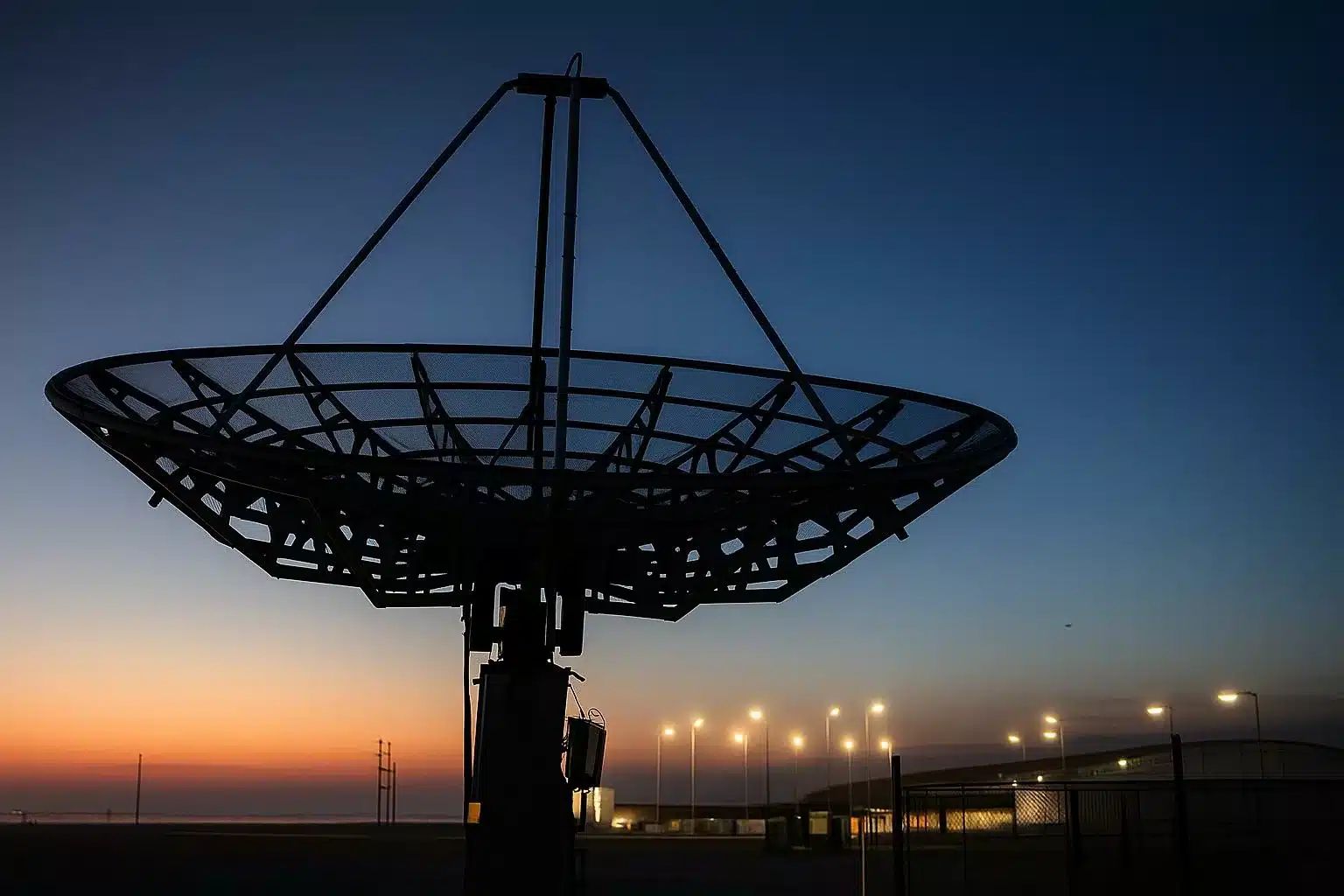
Following its March 2023 contract, SatRev’s delivery of a ground station for its Omani client forms part of a broader strategy to offer comprehensive, sovereign space capabilities to a global client base. (Credit: SatRev)
16 July, 2025
Polish space-tech firm SatRev has completed the delivery of a modular ground station in Oman, marking a strategic expansion into the Middle East. Built in Wrocław and equipped with a custom radome (radar dome)—a structural, weatherproof enclosure made of radio-transparent material that protects radar antennas—the station is tailored to withstand coastal desert conditions. The station supports UHF and S-band satellite communications and is designed for scalable integration with AI and data platforms.
The project stems from SatRev’s partnership with ETCO Space, Oman’s state-run space entity, and reflects a broader push to offer sovereign space capabilities under a Ground Station as a Service (G-SaaS) model. The installation is part of SatRev’s international growth strategy, which includes satellite manufacturing and launch services through its joint venture, Spazers. As regional governments seek operational independence and data sovereignty, SatRev’s infrastructure investments signal a shift in how smaller space nations are building strategic assets—positioning ground stations not just as technical nodes, but as gateways to regional influence and commercial resilience
Satellite Services Now Support 18% of UK GDP, New Data Shows: UK Space Agency Announces £6.1 Million in New Project Funding
16 July, 2025
New data from the UK Space Agency reveals that satellite services now support £454 billion in economic activity—18% of the UK’s GDP, up £90 billion from last year. This surge reflects the sector’s growing integration into national infrastructure, from climate monitoring to telecoms.
In response, at the UK Space Conference in Manchester, £6.1 million in new funding was announced for satellite communications and regional space clusters, including projects in 5G/6G connectivity, lunar communications, and in-orbit refueling. Projects include MDA Space UK’s SkyPhi for 5G/6G connectivity, SSTL’s lunar comms system, and Orbit Fab’s in-orbit refueling tech. A separate ESA-backed initiative will build a commercial lunar communications network. The UK also highlighted its role in climate science with the upcoming launch of MicroCarb, Europe’s first CO₂-mapping satellite. With 1,907 space organizations and rising employment, the sector is positioned as a strategic driver of growth and security. The conference highlighted a broader shift: space is no longer peripheral and is embedded in national priorities, with public investment catalyzing private innovation and shaping the UK’s industrial and geopolitical future.
SES Completes Intelsat Acquisition to Form Global Multi-Orbit Operator

The satellite antenna field at SES’s Betzdorf facility in Luxembourg serves as the operational hub for the company’s global activities following its acquisition of Intelsat. (Credit: SES)
17 July, 2025
SES has finalized its acquisition of Intelsat, forming a global satellite operator with a fleet of 120 satellites across geostationary (90 GEO) and medium Earth orbits (30 MEO), plus strategic access to LEO assets. The merger consolidates infrastructure, spectrum, and market reach, positioning SES to deliver multi-orbit, multi-band connectivity across government, aviation, maritime, and media sectors. With 60% of revenue now tied to high-growth segments, SES plans to invest €600–€650 million ($696-$754 million) annually through 2028 in emerging areas like IoT, direct-to-device, and quantum key distribution.
The deal also strengthens SES’s financial foundation, with projected revenue of €3.7 billion and a contract backlog exceeding €8 billion. Analysts note the move as a strategic counterweight to LEO competitors like Starlink and Kuiper, while SES maintains its Luxembourg headquarters and U.S. presence. The integration marks a shift in satellite telecom, where legacy GEO operators are retooling to compete in a multi-orbit, data-driven future.

RESEARCH SPOTLIGHT
Lunar Meteorite Found in Africa Expands Understanding of Moon’s Interior

Image of Northeast Africa 16286 sample from a scanning electron microscope. These "backscattered electron images" use shades of grey to show different mineral compositions in the rock. (Credit: Dr Joshua Snape / University of Manchester)
A newly analyzed lunar meteorite, Northwest Africa 16286, has filled a billion-year gap in the Moon’s volcanic timeline. Dated to 2.35 billion years ago, the basaltic rock was discovered in Africa in 2023 and offers rare insight into mid-era lunar volcanism, a period poorly represented in existing sample collections. Its unique geochemical signature, including high potassium and moderate titanium levels, suggests it originated from deep mantle lava flows and retained heat-generating elements like uranium, pointing to prolonged internal activity.
Unlike samples from Apollo or Chang’e missions, this meteorite likely came from a region far from known landing sites, expanding the spatial scope of lunar geology. Its shock features imply it was ejected by an impact before reaching Earth. Researchers argue that such finds can guide future sample return missions and refine models of lunar thermal evolution.
The study was led by researchers at the University of Manchester. The findings were presented at the 2025 Goldschmidt Conference in Prague, highlighting its significance in lunar volcanic history.
Despatch Out. 👽🛸
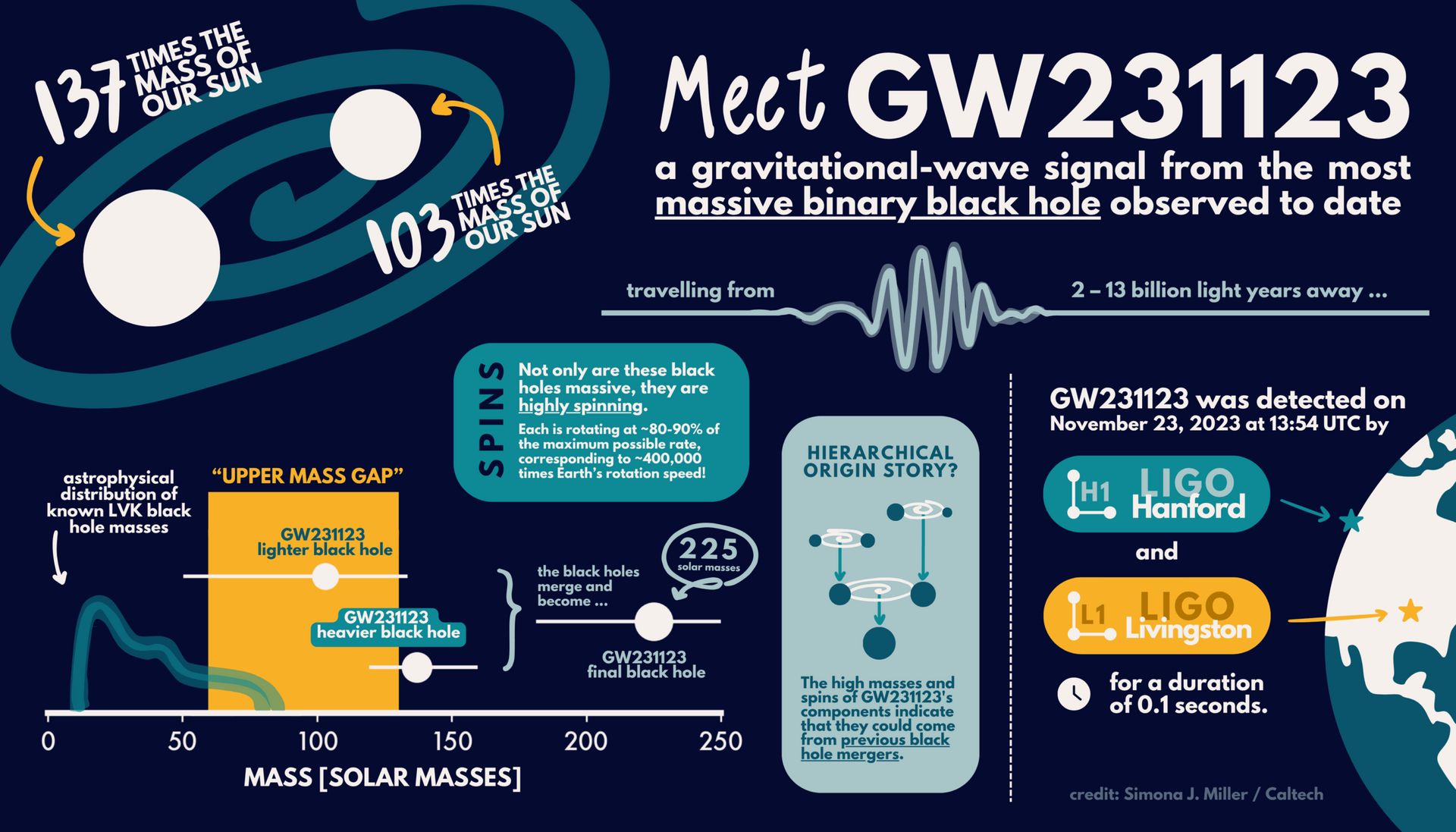

Reply